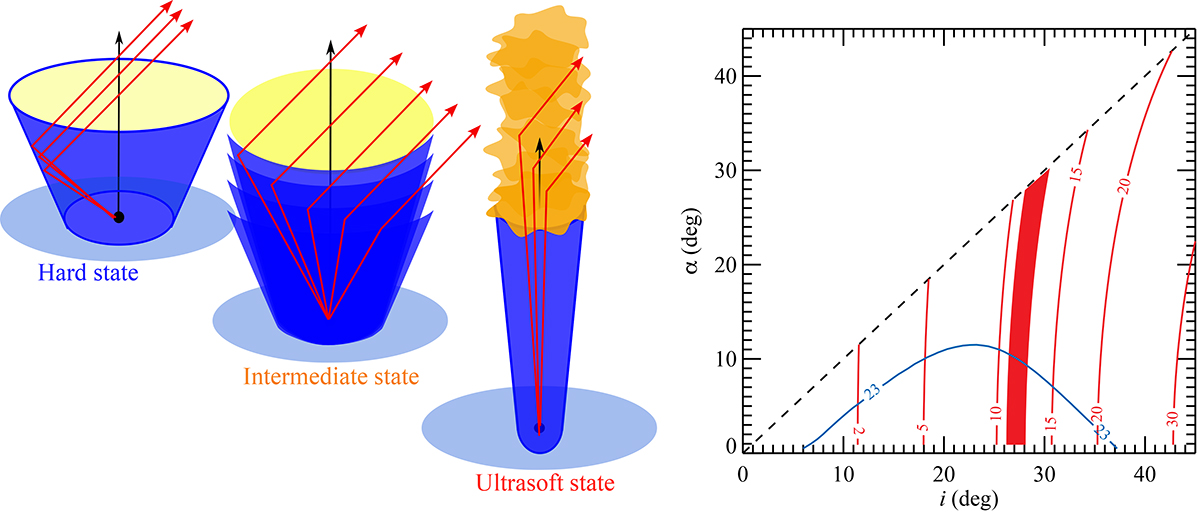Fig. 5.

Download original image
Accretion geometry and parameters of Cyg X-3. Left: Sketch of the geometry associated with the hard, intermediate, and ultrasoft states. The red arrows indicate the direction of the incident and reflected or scattered photons by the optically thick outflow (blue). In the hard state, the only photons reflected at the back surface of the funnel are visible to the observer, while in the intermediate state the reflected and scattered emission is coming from different sides of the funnel (the funnel upper parts become semi-transparent or clumpy). In the soft state, radiation scattered off the matter lying along the funnel axis dominates over the contribution of reflected emission. Right: Polarization of radiation undergoing single scattering above a funnel of half-opening angle α for different observer inclinations i (red lines). The filled red band depicts the conservative PD range 10.8−12.4% of Cyg X-3 in the ultrasoft state, which translates to the inclination of i = 26° −28°; this is very close to the values of ![]() determined by Antokhin et al. (2022). The blue line depicts the contour of the constant PD = 23% observed in the hard state for the model of the reflection from the inner wall of the conical surface (from Fig. 4b in Veledina et al. 2024).
determined by Antokhin et al. (2022). The blue line depicts the contour of the constant PD = 23% observed in the hard state for the model of the reflection from the inner wall of the conical surface (from Fig. 4b in Veledina et al. 2024).
Current usage metrics show cumulative count of Article Views (full-text article views including HTML views, PDF and ePub downloads, according to the available data) and Abstracts Views on Vision4Press platform.
Data correspond to usage on the plateform after 2015. The current usage metrics is available 48-96 hours after online publication and is updated daily on week days.
Initial download of the metrics may take a while.


